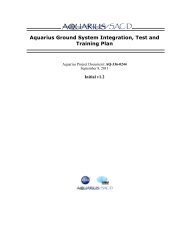NASA Goddard Space Flight Center Ocean Data Processing System ...
NASA Goddard Space Flight Center Ocean Data Processing System ...
NASA Goddard Space Flight Center Ocean Data Processing System ...
You also want an ePaper? Increase the reach of your titles
YUMPU automatically turns print PDFs into web optimized ePapers that Google loves.
4.0 DATA PRODUCTSThe following section summarizes the data product levels as defined by EOS, and then presentthe specific products generated for each sensor.4.1 <strong>Data</strong> Product DefinitionsThe OBPG data products generally follow EOS standard data product levels (Reference 4), asfollows:• Level-0 data products are reconstructed, unprocessed instrument/payload data at fullresolution; any and all communications artifacts, e.g. synchronization frames,communications headers, duplicate data removed.• Level-1A data products are reconstructed, unprocessed instrument data at full resolution,time-referenced, and annotated with ancillary information, including radiometric andgeometric calibration coefficients and georeferencing parameters, e.g., platformephemeris, computed and appended but not applied to the Level-0 data.• Level-1B data products are Level-1A data that have been processed to sensor units (notall instruments will have a Level 1B equivalent).• Level-2 data products are derived geophysical variables at the same resolution andlocation as the Level-1 source data.• Level-3 data products are variables mapped on uniform space-time grid scales, usuallywith some completeness and consistency.4.2 <strong>Data</strong> Products by SensorThe defining data product characteristics for each sensor are the temporal coverage, either thegranule periods (Level-1 and 2) or compositing periods (Level-3). This information issummarized in Table 15.The <strong>Ocean</strong> Color products all include combinations of the following derived geophysicalparameters: normalized water-leaving radiance (nLw) or remote sensing reflectance (Rrs) atmultiple visible wavelengths; chlorophyll-A concentration (chl-a); aerosol optical thickness(AOT), τ, in one red or NIR band; angstrom coefficient, Ǻ; epsilon ratio of the two NIRatmospheric correction bands, ε; the diffuse attenuation coefficient at 490 nm, K490; calciteconcentration or particulate inorganic carbon (PIC); particulate organic carbon (POC); coloreddissolved organic matter (CDOM); photosynthetically available radiation (PAR); andfluorescence line height (FLH). The MODIS SST products include 4-micron (nighttime only)and 11-micron (daytime and nighttime) SST. For the Level-3 products, each binned productcontains multiple geophysical parameters, while the SMI products contain one parameter pergranule.




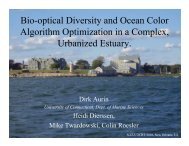
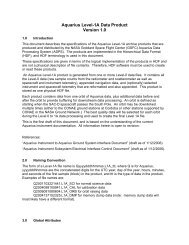
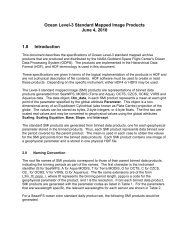
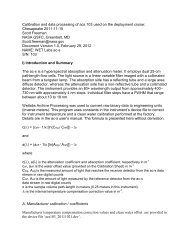
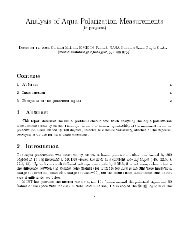
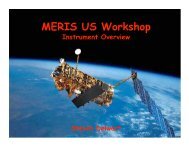
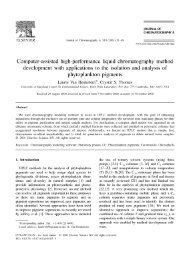
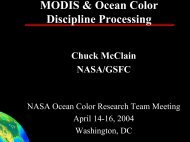
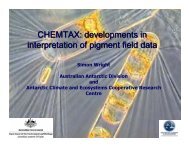
![Franz ocrt_terra_franz.ppt [Read-Only] - Ocean Color - NASA](https://img.yumpu.com/24076593/1/190x146/franz-ocrt-terra-franzppt-read-only-ocean-color-nasa.jpg?quality=85)

